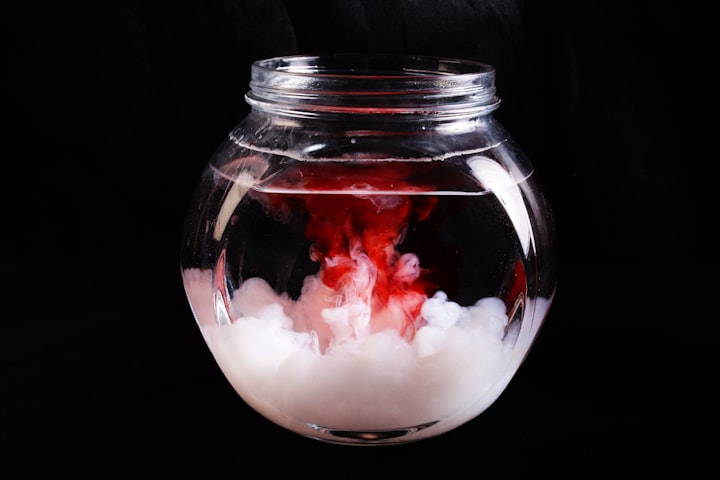Mysteries of Red Mercury
Red Mercury has become akin to the legendary philosopher's stone

For centuries, there have been rumors surrounding a mysterious substance known as "Red Mercury." While alchemists were said to have been searching for it as far back as medieval times, it gained new fame during the Cold War. This substance was hidden behind the Iron Curtain and remained entirely mysterious to the West, with a reputation for possessing extraordinary properties, yet its true nature remained shrouded in ambiguity. Some claimed it had the ability to summon supernatural beings, leaving many questions unanswered.
The lack of verifiable scientific evidence, combined with contradictory claims and the absence of a standardized definition, adds to the mystery surrounding this substance. Its very allure seems to come from its unknown properties. Over the years, Red Mercury has become akin to the legendary philosopher's stone, and people have ascribed various properties to it.
There is no definitive answer as to what Red Mercury is, and descriptions of it tend to vary. It is usually described as a mysterious, red-colored powder or liquid with extraordinary properties. Unfortunately, these properties tend to change depending on whom you're talking to. While it has been said to do everything from healing the sick to causing nuclear explosions, the true nature and composition of Red Mercury remain elusive, if the substance even exists at all.
Many modern experts argue that Red Mercury is nothing more than a fabrication or an amalgamation of various conspiracy theories. The fact that people have been searching for it in mummies and bat nests has led to grave robbing and tomb raiding, as well as modern-day scams.
During the Cold War, Red Mercury became headline news, with references to it first cropping up in major Soviet and Western media sources during the 1980s. It was said to possess highly explosive characteristics, with claims that it was a powerful catalyst that the Soviets were using to amplify the destructive force of conventional explosives. There were also assertions that Red Mercury exhibited unusual thermal and radioactive properties, leading to claims that it was a key component in Soviet nuclear weapons.
After the fall of the Soviet Union, the stories revolving around Red Mercury became much scarier, with rumors spreading that a previously unknown nuclear material created in Soviet labs was being sold by rogue scientists. However, there is no evidence to support these claims.
Numerous mercury compounds, including mercury sulfide, mercury(II) oxide, and mercury(II) iodide, are commonly red in color, with mercury sulfide being the source of the bright-red pigment vermilion. Additionally, certain mercury compounds, such as mercury(II) fulminate, are known to be explosive. However, there is no publicly available evidence to suggest that any of these compounds have been utilized in the development of nuclear weapons. The term "red mercury" may also be used as a code name for a substance that does not contain mercury.
Various substances have been analyzed as potential samples of "red mercury" since the media first reported on its existence. However, no single substance has been identified as such. In May 1994, German authorities seized a sample of radioactive material that was found to be a complex mixture of elements, including plutonium, mercury, antimony, oxygen, iodine, and gallium. The purpose behind the creation of this mixture remains unknown, as does the reason for the presence of glass fragments and brush bristles in the sample.
In contrast, an analysis conducted in 1998 on a different "red mercury" sample concluded that it was a non-radioactive mixture of elemental mercury, water, and mercury(II) iodide, a red-colored chemical. Similarly, an analysis of a sample recovered in Zagreb in November 2003 found that it contained only mercury. One previously suggested formula for red mercury, Hg2Sb2O7 (mercury(II) pyroantimonate), was not detected in the 2003 sample.
In recent years, Red Mercury has been claimed to be an ancient substance with magical properties, with scam artists and hoaxers claiming it can do whatever a potential buyer needs it to do. However, the real Red Mercury is called mercury sulfide, also known as cinnabar, which is a red-colored mercury-containing ore that's commonly used to decorate pottery. It's also toxic since it contains mercury, which is incredibly hazardous to human health.
In 1993 and 1994, British Channel 4 television produced two television documentaries on the subject of red mercury, namely Trail of Red Mercury and Pocket Neutron. These documentaries purported to present compelling evidence that Russian scientists had developed a miniature neutron bomb utilizing a mysterious substance known as red mercury.
In conclusion, while the allure of Red Mercury remains strong, there is no evidence to support the claims surrounding its magical or destructive properties. It is important to be wary of articles touting its benefits or properties, as they are likely either scams or scaremongering tactics.





Comments
There are no comments for this story
Be the first to respond and start the conversation.